By Hannah Traverse
The Corps Network
Earlier this week, a video of California Conservation Corps staff member John Griffith dancing with several of his Corpsmembers became an Internet sensation. When not dancing, John leads Corpsmembers and pursues his passion for helping young people make meaningful connections to nature.
John Griffith wanted to write a book that would inspire kids, particularly minority kids from urban settings, to get interested in endangered species and environmental activism. The result was Totem Magic: Going MAD, a fantasy book for young readers that focuses on a hidden world of Totem Mages, witch doctors, gremlins, zombies, and other magical beings.
Totem Mages are a kind of Magic User born to protect a specific endangered or threatened plant or animal species. As it turns out, there are many Magic Users living among us who use their powers to help (or hurt) the environment. The book is fast-paced and filled with exciting characters and funny situations that would appeal to the book's target audience of kids ages 10 and up. But John hopes the book does more than just entertain.
"I think imagination is an underrated thing today. I was hoping that this book could give kids a pathway or give them permission to start using their imagination to think about ways they can help make their communities and the environment better places," said John.
The book tells the story of how Vulchy and Connie, two Totem Mages, attempt to rescue Connie's father, Kenule Ejeekwa, who has been kidnapped by Kaktor, an evil witch doctor bent on destroying the environment and speeding up Pyro-Glacies (global warming). Dr. Ejeekwa is a good witch doctor who leads Green Force; a top-secret organization that fights against evil, environmentally harmful magic. When Dr. Ejeekwa goes missing, Vulchy and Connie are told to let the adults take care of the situation as neither of them is a mature Magic User; they are both only on the verge of the mysterious coming-of-age transformation process known as "going MAD." Despite their inexperience, Vulchy and Connie set out to rescue Dr. Ejeekwa and stop Kaktor.
Totem Magic: Going MAD is John's first published work for young readers, but he has spent many years working in environmental protection and writing about the importance of an inclusive and racially diverse environmental movement. John's love of the outdoors and his concern about racial and ethnic equality started at a young age.
"I lived in the city, but I always wished that I had been born in the country. I grew up in a very multicultural place, in the Bay Area in California. I had friends of every race and ethnicity and religion. As I began to travel around the United States when I got a little older, I realized that everywhere wasn't like that. I started seeing discrimination and I started hearing racism. It deeply concerned me," said John. "I realized that the conservation movement is white. It's very, very white. That's not going to work. It's going to take all of us to take care of National Parks, it's going to take all of us to take care of State Parks, it's going to take everybody to protect endangered species."
John was just 11-years-old when he started volunteering at a local wildlife care center. John loved his work there, but when he was 16 his supervisors realized he was getting into drugs and asked him not to come back. John's high school years were unstable and marred by substance abuse, but working in nature provided him with a purpose. It was John's experience in a youth service and conservation corps that eventually helped him get back on his feet.
"In high school I was homeless and had drug issues, but I loved nature. A friend told me about the California Conservation Corps (CCC) because he knew I loved nature and knew that I needed a place to stay," said John. "When I joined the CCC, they sent me to get help and I got clean. I got into nature. The Corps was completely transformational for me."
John left the California Conservation Corps after serving as a Corpsmember in 1989 and 1990, but he certainly didn't leave the conservation field. He spent the next 15 years applying his skills and his enthusiasm for the outdoors in a number of different environmentally-related jobs. John worked for such organizations as The Nature Conservancy and the Wildlife Conservation Society. He worked on boats and did fishery surveys. He also worked in State Parks. In 2000, John received his bachelor's degree and took a job as an agricultural consultant. However, he realized that his real calling was working with youth. This realization led John to become a C-1 Crew Supervisor with the California Conservation Corps in 2005. He has stayed with this position ever since.
"I have completely enjoyed my years with the Corps. I love working with youth. I especially like working with urban youth who haven't been in the wilderness or haven't been in natural areas much," said John. "My favorite, favorite part is being there for someone's first time discovery. I love when someone sees a salamander for the first time, or when someone holds a frog for the first time, or when someone looks up and a bald eagle is flying over their head."
Through his years as a Crew Supervisor, John says he has become increasingly concerned about nature deficit disorder; a hypothesis by journalist Richard Louv that children are spending less time outdoors, resulting in a number of behavioral and physical problems including attention disorders and depression. John says he doesn't need to see Louv's studies to know that nature deficit disorder is real; he sees it in his Corpsmembers every day. One of John's main goals in writing Totem Magic was to make sure the book appealed to urban youth who might not have had much exposure to nature.
"I wanted to go inside the house through a book, get kids interested in endangered species, and draw them outside. I was actually kind of writing for the neighborhood I grew up in. Connie and Vulchy live in Fairfield, California," said John. "I think a lot of people believe that everyone in California is blonde and surfing, but there are really so few of us that are actually like that. We're mostly Latino, and Asian, and black, and all of the above. When I hear people talk about that stereotypical Californian, I think 'what California is that?' We look like the whole world here. So I wanted my book to look like that, too... I would just like to really see the conservation movement look like the American population."
Totem Magic is filled with cultural references that celebrate the diversity of the book's characters. There are Spanish words and references to La Llorona, a ghoulish murderess popular in Mexican folklore. There is a cabdriver with a taste for Reggae music. There are ghosts and zombies and skeletons, demonstrating an understanding and respect for how some cultures do not fear the dead in the way many people do.
"I think that typical, mainstream American culture has some weird issues with death. Other cultures don't share that. In Latino culture they celebrate Dia de los Muertos (Day of the Dead)," said John. "I think that a lot of cultures wouldn't consider skeletons and some of the elements in the book to be so dark."
Almost all of the characters in Totem Magic: Going MAD are black or Latino. Some characters are based off real people. For instance, Connie's father, Dr. Kenule Ejeekwa, is named after Kenule Saro-Wiwa, a Nigerian activist who was killed for his efforts to combat Shell Oil drillings. Connie herself is modeled after John's friend Connie Stewart, his former supervisor at the Northcoast Environmental Center in Arcata, California.
"I wanted to have characters that look like the heroes in my life," said John. "I have white heroes in my life, but most of my heroes are black and Latino. That was important for me to respect my own personal heroes who have helped me a lot in my life. Also, there's a whole generation of kids that think that if someone has magical powers they're white and they live in England. I wanted to show that you could be awesome and know magic and do all this cool stuff and you could be anybody. I've also blogged on my website about how you don't have to have magical powers to be a Totem Mage. Everyone can do something to help the environment."
Over the years, John's environmental work has brought him in contact with many "real Totem Mages," like the people who work at wildlife care centers and devote their lives to looking after animals. John decided he wanted to donate 100 percent of the proceeds from Totem Magic: Going MAD to these real life environmental champions and other organizations he cares about. He has arranged it so that 25 percent of profits go to wildlife care centers, 25 percent goes to organizations that promote cultural diversity in the conservation moment, 25 percent goes to endangered species protection groups, and 25 percent goes to worthy organizations chosen by his readers.
"These are the kinds of people and organizations I've always wanted to give money to but I've never been a rich man," said John. "When I wrote the book and I wrote it for kids to get them interested in the environment, it seemed appropriate that the money go to people who are trying to help youth and the environment. It just seemed like a natural connection to me."
John has sold about 400 to 500 copies of Totem Magic: Going MAD. He says he hasn't done much marketing recently as he is considering rewriting a few chapters, but he is eager to see the book get into the hands of more kids.
"I get really interesting mail now. A classroom from my hometown all drew pictures of their favorite scenes from the book, which was absolutely hilarious to me," said John. "I'm hoping that I have a lot more responses from kids to look forward to."
John is currently working on a more urbanized sequel to Totem Magic: Going MAD. He says he is prepared to write a whole series if he knows there would be interested readers. He has plenty of inspiration to help fill the pages of subsequent Totem Magic books; almost every detail and character in Totem Magic: Going MAD is based on suggestions from friends or actual events from John's life. Additionally, the Corpsmembers John supervises for the California Conservation Corps have provided valuable critiques and endless inspiration. John has also been inspired by other writers, such as Tamora Pierce, author of multicultural fantasy books for youth, and Akiima Price, creator of the What's Good in my Hood? curriculum.
"I'm really interested in collaborating with people. I'm very open to new ideas and people can contact me through my website and my Facebook page," said John. "If there are people out there who can think of any way to integrate the environment and arts in a way that would help youth, just know that I'm always looking for ideas for how to get Corpsmembers interested in making their communities better places, and becoming engaged in clean air and clean soil and the environment. If anyone has any ideas or if they have a project they want to collaborate on, I would love to hear from them."
Learn more about John's book on his website.
